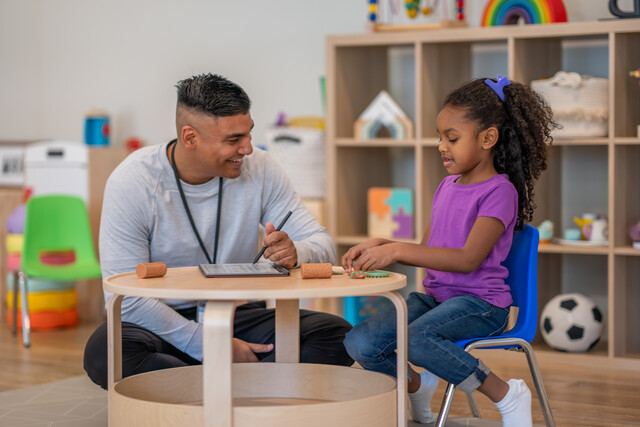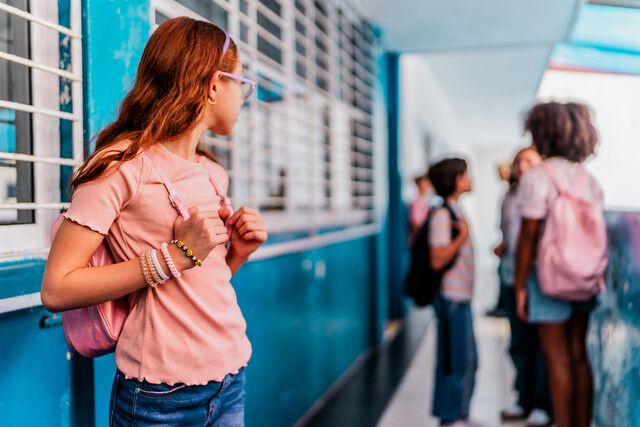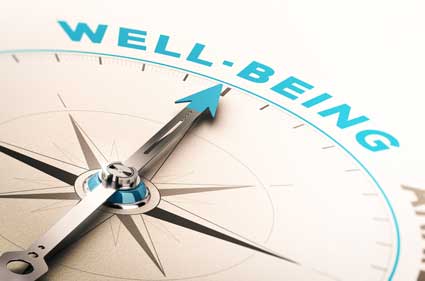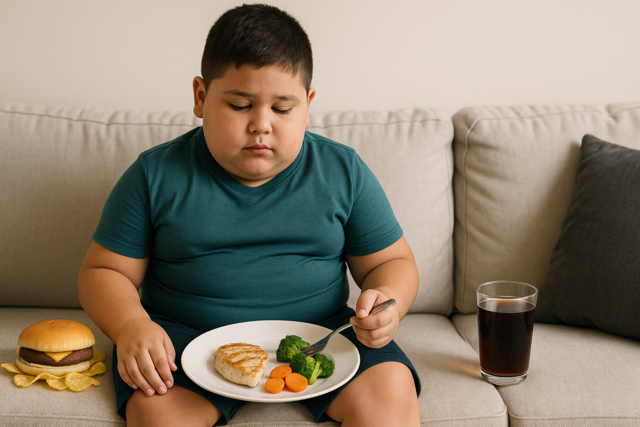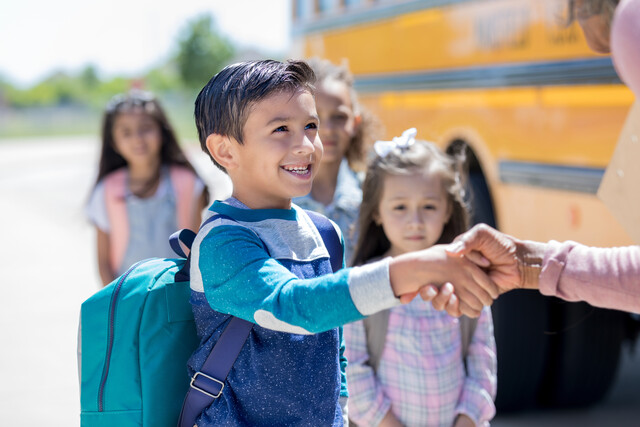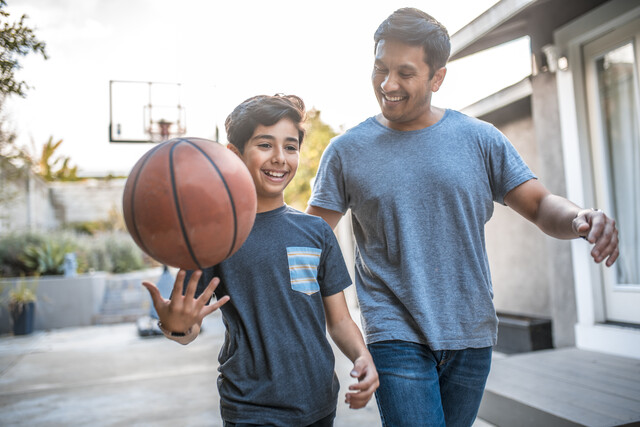Intervention Procedures for Bullying
In September 2012 in Bunnell, a small Florida town north of the Daytona Beach area, a mother confronted her son's bully. Her teenage son allegedly was being bullied by a 17-year-old he saw at school and rode the bus with. The bullying escalated to where the teen allegedly beat her son up. The mother took it upon herself to intervene in the situation, but found herself caught in the mix.
When Felecia Phillips went to the bus stop to confront the bully the morning after her son had been beat up, things got out of control. After having a verbal exchange, she pushed the teenager, and he then slammed her to the ground at the bus stop. Subsequently, Phillips was the one who was in trouble with the law. She's an adult, the bully is not, and she laid a hand on him, regardless of the fact that he had touched her son the day before.
More Incidents
The news is dotted with headlines of parents trying to step in and take action to protect their child, or who come face-to-face with their child's bully. Take, for example, James Jones, a Lake Mary, Florida father whose daughter has cerebral palsy. She had been bullied on the bus and he was fed up. So he boarded the bus and began yelling at the students who had been bullying his middle school-aged daughter.
He rattled off some obscene words and a few threats. In the end, it was Jones who was in trouble, not the middle school bullies that prompted him to visit the bus stop in the first place. When all was said and done, James was charged with disorderly conduct and disturbing a school function. He received six months probation, a $1,000 fine, and was required to take anger management classes and perform 10 hours of community service.
Stories like this are not uncommon. And they leave many parents either afraid intervene, or unsure how to do it without getting themselves into trouble. This is where intervention education and awareness becomes so important for the community. We want people to stand up and help, and to address the situation. But we need to make sure they have the tools to do so, and know the proper way to go about it, so they can avoid the situations Phillips and Jones found themselves in.
When It's Happening
Every community needs to focus on bullying prevention. But for many communities it is already taking place. And while prevention may help to reduce the incidence of bullying, it likely won't eliminate it. Part of a good prevention program is having the information in place to help those who need it when bullying does happen.
It's estimated that each year in America there are around 2.7 million students who are bullied, and another 2.1 million students who are doing the bullying. That's nearly five million of our nation's youth affected by bullying each year. Because of this, we need to know what to do when it is happening.
In creating a bullying prevention plan for your school, it is important that everyone -- from teachers, to students and bus drivers -- know what to do when they see bullying taking place. We cannot have a safe environment if we have teachers or bus drivers, or other students, who stand by and don't know what to do. Have the plan put in place and make sure everyone knows what they can do.
Some of the interventions you will want to consider including in your plan are:
- If you witness bullying, speak to the bully (without bullying, threatening, or using obscene language), and remind them of the school rules regarding bullying. If it's outside of school, remind them that harassment is also illegal and that the police could be called.
- Don't turn away. If they see adults turn and walk away, they know they can pretty much get away with anything. You have to think about how you would feel if it was your child being bullied, or if it was you. Most of us would want the adults around us to say something to stop the bullying.
- Always report the bullying incident to the teachers and school administrators. There needs to not only be a reporting process in place, but also one that keeps a record of the incidents.
- Provide support to the victim. They may fear retaliation since someone stepped in. Let them know what to do to handle the situation if it happens again. If you can help them "save face" so that they are not embarrassed in front of people, try to do that as well.
- If you have the ability to do so, impose the consequences for the bullying right away. If you do not, refer the matter to those who can, so that it can be immediately addressed.
- When there is a situation that you find yourself in, where you aren't sure if bullying is taking place, ask those around the area, the bystanders, for more details. Most of the time they will be willing to say what's transpiring, including if it's bullying.
- Parents should be notified, for both the bully and victim, so they can help address it at home, as well. Do not have the bully and victim come together to try and work out the situation. This is not a successful route to take, because bullying is about power.
- Follow up with bullying situations to monitor and see how things are going. That way the bully, and victim, know that someone is keeping tabs on the situation. When they realize this, it is less likely to continue.
There are two important issues that come into play when discussing intervention. When these two things are successful, bullying will become less frequent. They are:
1) Standing up to the bully. Bullies will only pick on those they feel lack power. They see them as being weaker, which makes them feel they can exert power over them and get away with it. Tweens and teens should be taught the importance of standing up for themselves, so that they do not appear weak. Parents and teachers can even practice role playing, where they are taught to look the bully in the eye, stand tall, and reply back to leave them alone. When victims stand up for themselves, they are less likely to continue being bullied. The bully will in all likelihood move on to someone else who is weaker and doesn't stand up to the them. Teach teens how to protect themselves by responding verbally, and also how to protect themselves if they are being attacked. Self defense skills are essential throughout life.
2) Turning bystanders into upstanders. One of the greatest tools in fighting bullies are their peers. When students and other teens are taught to stick up for one another, even if they are not friends, bullying will become less common. Schools should teach this as part of their prevention strategy. If someone sees another person being bullied, they should stand up for the person being bullied, or get help. There is safety in numbers and peer influence can help stomp out bullying at schools and in the community.
Whether on school grounds or in the community, there are things parents, students, and school staff can do to help with bullying intervention. Taking the proper measures is essential to ensuring that those intervening stay safe, as well as within the letter of the law. The plan of action needs to be developed and then communicated to others.
Coming up next, we will look at some of the new ways that people are engaging in bullying, such as cyberbullying, and what can be done about it.
At one time bullying was just synonymous with school grounds. People believed that teasing and school yard fights were something that people went through, like a rite of passage. They also believed that bullying was something the students left behind once they got home. After all, they were in the confines of their home, where they should be in a safe and secure environment. However, technology has changed all that and today we not only realize that just because bullying happens, it is not an acceptable part of growing up, and that technology has empowered the bully.
High-Tech Bullying
Megan Meier was a girl who was about to turn 14 years old. One day she received a friend request to her MySpace account. Although she didn't know the teen boy who was sending the request, she got permission from her mother to accept the friendship. She spent weeks writing back and forth, getting to know the boy. He made her feel confident and she ultimately ended a friendship with a girl down the road, with whom she had a rocky on-again-off-again friendship.
Once she did that the teen boy began to say horrible things to her. Other friends began posting rumors and obscene things about Megan on her account. She became very emotional and upset over what was happening. She didn't know how this boy even knew about the things he was writing about, including the ending of the friendship with the girl down the road. Megan ran away from the computer, went upstairs while her parents were in the house, and hanged herself.
When all was said and done the truth about the boy that had sent her a friend request came out. It wasn't a teen boy after all. Instead, it was the mother of the girl she broke off the friendship with. The mother set up the account, posing as a teen boy, and becoming friends with her, so she could get Megan to share secrets about her own daughter. She likely didn't know that things would escalate to suicide, but this story just goes to show the deceptiveness that can take place online and what it can lead to.
With the advent of the Internet and cell phones came the ability to provide people with a sense of anonymity. Even those that are not anonymous tend to feel bolder being bullies from behind the computer monitor or cell phone. So much so that cyberbullying, as it is referred to, has become ever so popular and is on the rise. Cyberbullying, according to the Cyberbullying Research Center, is defined as "willful and repeated harm inflicted through the use of computers, cell phones, and other electronic devices." It may include people sending emails or texts, and posting videos or messages about others. People often use these tactics to send hurtful or threatening messages, as well as to post rumors about their victims.
According to i-SAFE America, a group that focuses on Internet safety education, about 42 percent of kids have been bullied online. Also, they report that 35 percent have been threatened online, and 21 percent have received some sort of mean or threatening email or message. Of these, nearly 60 percent of them have not told their parents about the incident.
Identifying It
Because most tweens and teens are not going to tell their parent about the cyberbullying, it is important for parents to stay involved. They need to be aware of what their kids are doing online and keep tabs on them. Although controversial, some parents today are using spy programs that allow them to monitor everything that is being done on their teens' computer and/or cell phone. It gives them access to information that will show everything from the text messages sent, to the websites visited.
It's important for parents to discuss cyberbullying with their kids. We live in a world where teens will increasingly need to spend time online, if only to conduct research and work on school projects. But knowing about safety measures can make a big difference. Some of the things that should be discussed with tweens and teens regarding cyberbullying include:
- Nothing online is actually all that anonymous. There can be IP addresses tracked to see where messages are coming from. Plus, messages can be saved to create a paper trail.
- If your child does experience cyberbullying save the messages or whatever it is that happened. This way there is evidence if it is needed later.
- If any of the messages or posts are threatening in any way contact the police. It's illegal to threaten people. Also, you can contact their Internet Service Provider and report the violation. If they have done it through a social media contact site, it is also likely a violation of their terms of service.
- For any cyberbullying that takes place at school or is school-related, be sure to discuss it with the school administrators.
- Teach them to never agree to meet with people they meet online. They also shouldn't engage cyberbullies. The better route is to ignore their messages, but keep them as evidence. Also, there are some devices that will allow someone to block cyberbullies.
Just as there are bullies offline, there are bullies online. You may discover that your child is a cyberbully. If you do find out such information, you will need to take measures to correct the situation and let your child know how serious it can be. People may feel they just want to spread rumors and don't intend on the victim committing suicide, but the sad reality is that there are more Megan Meier's throughout the country. As cyberbullying is on the rise, so too are the problems that arise from it. In September 2012, a cyberbullying case that took place in Canada sent a 17-year-old girl and her father to court. She won the right to remain anonymous and for Facebook to provide the IP address of whomever it was that created a fake Facebook account in her name. In setting up the account, they used a photo of her and posted horrible and defamatory things about her.
In May of 2012 a middle school student in Georgia, Alex Boston, took her cyberbullies to court. She decided to do this after she had contacted the local police and they said there was nothing they could do about the incident. Two students had posted rumors about her online, so she and her family decided to sue them for libel. Many states are adopting cyberbullying laws as a result of such incidents. Most of the time it does not take place on school grounds, so it is an issue that those in the community need to take seriously and create a plan to prevent and address it.
Coming up, we will look at special needs students as it relates to bullying.







